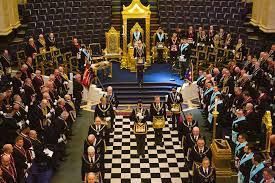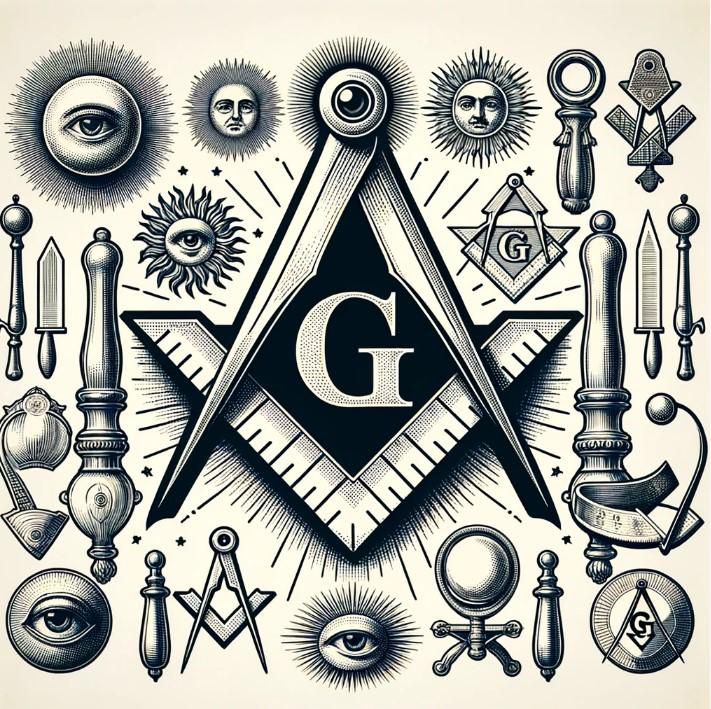This article delves into the history, structure, purpose, and symbolism of the Freemasons, providing a comprehensive overview of this intriguing society.
Who are the Freemasons?
Freemasonry is a fraternal organizations that traces its origins to the local fraternities of stonemasons, which from the end of the 13th century regulated the qualifications of stonemasons and their interaction with authorities and clients. Today, Freemasonry is a worldwide organization that transcends national and cultural boundaries.
Historical background
- Origins: The exact origins of Freemasonry are unclear, but it is generally believed to have emerged from the stonemason guilds of the Middle Ages.
- Evolution: By the early 18th century, Freemasonry had evolved into a speculative organization open to men from various professions.
What do the Freemasons do?
Freemasons are known for their philanthropic activities, moral teachings, and social gatherings. Their activities can be broadly categorized into three areas: charitable work, self-improvement, and social networking.
Charitable work
Freemasons are heavily involved in charitable activities, supporting various causes through donations and volunteer work. They often raise funds for hospitals, educational scholarships, disaster relief, and local community projects.
Self-improvement
Freemasonry emphasizes personal development and moral integrity. Members are encouraged to strive for self-improvement through education, ethical behavior, and community service. The organization's teachings are conveyed through allegorical plays and rituals based on stonemason legends.
Social networking
Freemasonry provides a platform for social interaction and networking among its members. Lodges, which are local chapters of Freemasons, hold regular meetings and events that foster camaraderie and mutual support among members.
Who is allowed to join?
Freemasonry is open to men who meet certain criteria, though some branches also accept women. The primary requirements for membership include:
- Belief in a supreme being: Candidates must believe in a Supreme Being, although Freemasonry is not tied to any particular religion.
- Good character: Prospective members should be of good moral character and have a reputation for honesty and integrity.
- Age requirement: Applicants are typically required to be at least 18 or 21 years old, depending on the jurisdiction.
- Free will: Membership must be sought voluntarily; individuals cannot be coerced into joining.

Why do they exist?
Freemasonry's purpose is multifaceted, encompassing the promotion of moral and ethical development, the provision of charitable aid, and the creation of a supportive community.
Philosophical goals
Freemasonry aims to build better men and, by extension, a better society. It seeks to instill values such as truth, charity, and brotherly love in its members.
Charitable mission
The organization is committed to philanthropy and public service, aiming to make a positive impact on communities and support those in need.
Social and networking benefits
Freemasonry provides a network of like-minded individuals who offer support, mentorship, and friendship to one another.
How do they operate?
Freemasonry operates through a hierarchical structure of lodges, with each lodge governed by a set of established rules and rituals.
Organizational structure
- Lodges: The basic organizational unit of Freemasonry. Each lodge is governed by officers, including a Worshipful Master, Wardens, and a Treasurer.
- Grand Lodges: Lodges are overseen by Grand Lodges, which are regional governing bodies that set policies and standards for the lodges under their jurisdiction.
Meetings and rituals
Lodges hold regular meetings where members participate in rituals, discuss business, and plan charitable activities. Rituals involve symbolic gestures, recitations, and the use of symbolic objects, all intended to convey moral lessons.
Symbols of Freemasonry
Freemasonry is rich in symbols, many of which derive from the tools and practices of medieval stonemasons.
Common symbols
- Square and compasses: Perhaps the most recognizable Masonic symbol, representing morality and the balance between spiritual and earthly duties.
- The Letter "G": Often found within the Square and Compasses, symbolizing both God and Geometry, reflecting the divine order of the universe.
- Apron: Worn by Masons during rituals, the apron symbolizes purity and the work ethic of the stonemason.
- All-seeing eye: Represents the omnipresence and omniscience of a Supreme Being.
- Level and plumb: Tools representing equality and upright behavior, respectively.

The Freemasons are a historic and influential fraternal organization dedicated to moral development, charitable work, and the creation of a supportive community.
While much of their practices are conducted in private, their symbols and philanthropic efforts are well-known and respected worldwide.
Understanding the Freemasons' origins, purpose, and operations provides insight into a society that has significantly impacted social and cultural development across centuries.
)

)
)
)
)
)
)
)
)
)